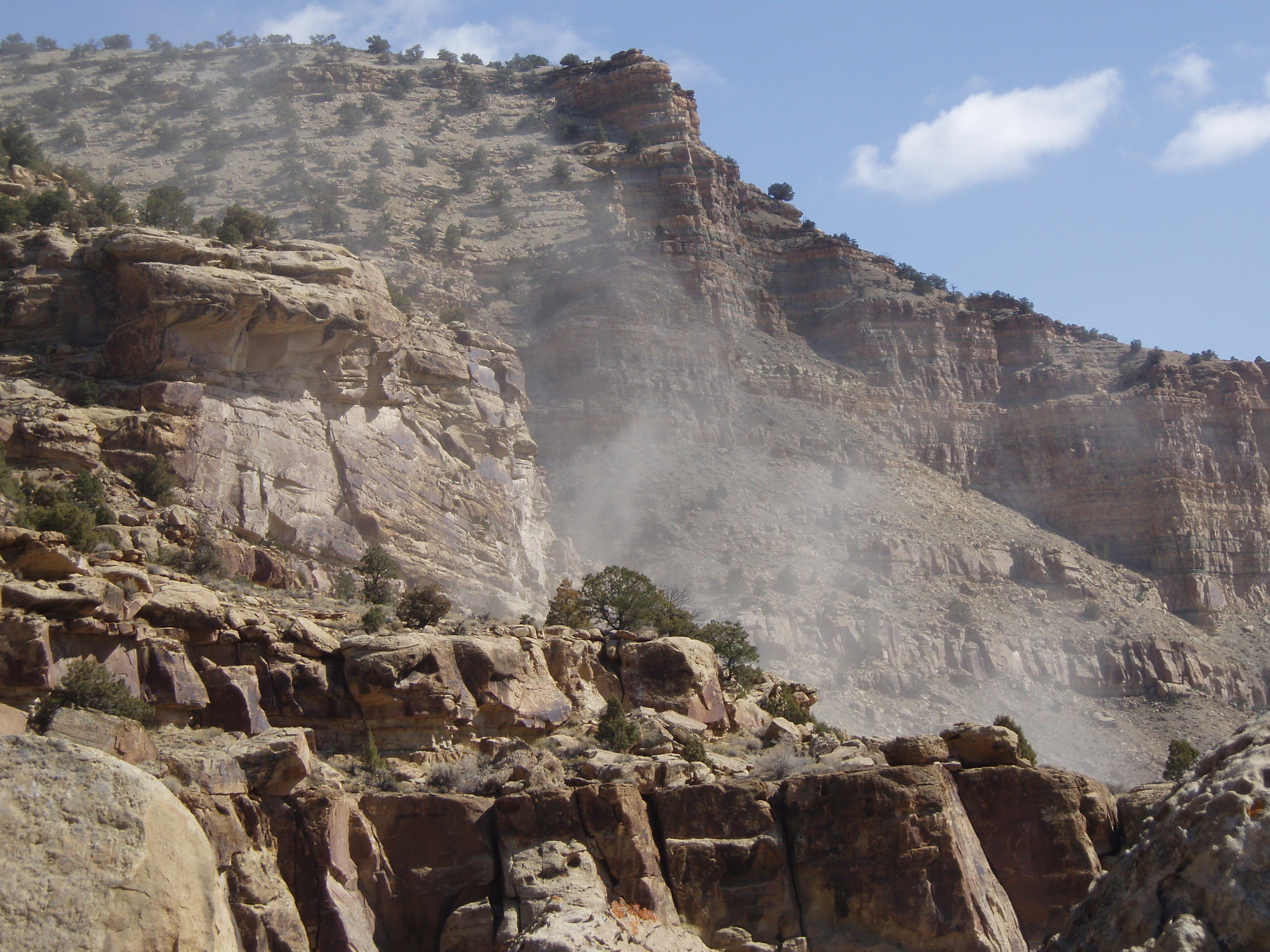by Shawn Regan
This summer, the unthinkable happened. Without litigation, an energy corporation and an environmental group reached a voluntary compromise on how to achieve two seemingly irreconcilable ends: environmental preservation and natural gas drilling. The Bill Barrett Corporation and the Southern Utah Wilderness Alliance (SUWA) agreed to limit drilling on Bureau of Land Management lands on the West Tavaputs Plateau in central Utah – an area rich in recreational opportunities, archeological resources, and natural gas.
The story goes like this. The Bill Barrett Corp. had acquired leases to drill for natural gas near Nine Mile Canyon, an area revered by recreationists for its stunning landscapes and prehistoric Indian petroglyphs. The area is also home to abundant reservoirs of natural gas – a scenario that typically results in political jockeying and lengthy legal battles. However, a series of meetings between SUWA and Barrett negotiators resulted in a plan to limit the number of drill wells by about 70 percent and reduce the surface area impact from 3,656 acres to 1,603 acres by implementing “directional drilling” techniques. “This is the purest win-win we could come up with,” remarked Barrett’s vice president. The plan was also hailed by Interior Secretary Ken Salazar and others as an “unprecedented” and “historic” agreement.
The unfortunate reality is that compromises between industry and environmentalists are the exception, not the rule, on public lands. Multiple-use mandates and environmental review processes keep public land managers in a perpetual state of political gridlock that is often marked by protracted litigation.
But compromises between industry and environmentalists are not so uncommon on privately-owned lands, where land managers have the right incentives to reach such win-win agreements. In this way, private lands offer a valuable lesson on how to ensure that cooperation between such diametrically-opposed groups becomes less the exception, and more the rule.
Consider the Paul J. Rainey Preserve in Louisiana, which is owned by the Audubon Society. For nearly 50 years, a natural gas company operated within the sanctuary under strict rules put in place by the Audubon Society, such as no pumping during nesting season and equipment requirements that makes less noise. This arrangement brought in more than $25 million for Audubon, which was used to improve the sanctuary and purchase additional lands for preservation.
In Michigan, another Audubon preserve allows horizontal drilling under strict environmental standards that both protects wildlife habitat and makes use of valuable oil reserves.
Such cooperation occurs on privately-owned land because ownership requires landowners to carefully consider the value of alternative uses of the land. If valuable wildlife habitat or recreational land exists, landowners can profit from preserving these areas or creating an easement agreement with a conservation group. If there is high commodity value, landowners must take into account the potential revenue from exploration when deciding how to best use the land. As the Audubon preserves demonstrate, the result is often a combination of the two.
With publicly-owned land, cooperation between industry and environmentalists is extremely rare. The case of the Arctic National Wildlife Refuge (ANWR) is a classic example of this lack of compromise. Environmentalists have no incentive to consider the benefits of drilling, and energy proponents have no reason to consider environmental costs.
The result of publicly-owned land is that its use fluctuates with the whims of politics. In 2008, the Bush administration auctioned off controversial oil and gas leases adjacent to Arches and Canyonlands national parks only for them to be cancelled by the Obama administration. In this way, the results are all-or-nothing political outcomes, not compromises.
Because ownership of land encourages cooperation instead of conflict, certain policy changes could make compromises like the Bill Barrett-SUWA agreement less exceptional. Privatizing much of the federal estate would force the lands to go to their highest-valued use. Given the proliferation of land trusts and legal tools such as conservation easements, areas of important environmental value could be preserved while land of marginal environmental value could be managed for its energy resources. However, privatization is unlikely. Instead, PERC has identified viable alternatives that provide for more local management, such as trusts (see here and here).
Short of creating a trust, federal rules could be amended to allow environmentalists to participate in the bidding process for oil and gas leases. Under current BLM rules, leases cannot be held by environmental groups for non-consumptive use, leaving the auctions free from competition from environmentalists and at below-market levels. Open auctions where all interested parties are allowed to bid would encourage better use of public lands.
Interior Secretary Salazar said the agreement between Bill Barrett and SUWA was “an outstanding example” and a “fresh look of how we can better manage our energy resources.” Utah’s BLM director called it “the kind of collaboration we need.” If we want to ensure this type of litigation-free cooperation, steps toward privatizing lands and freeing up the bidding process will result in a win-win for the environment and energy development.





